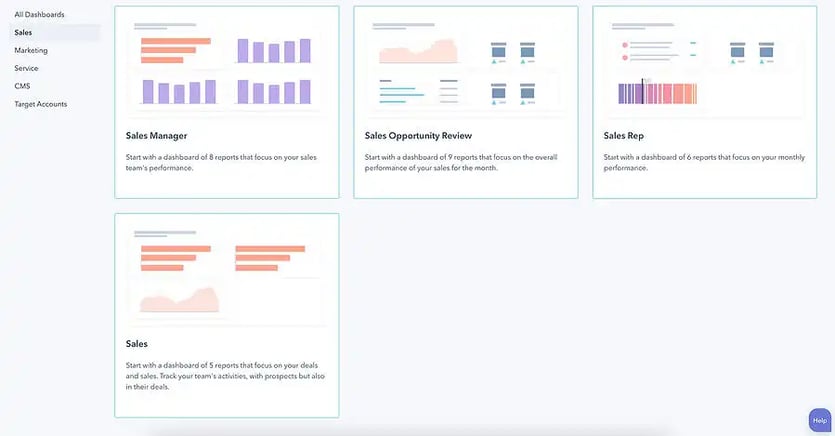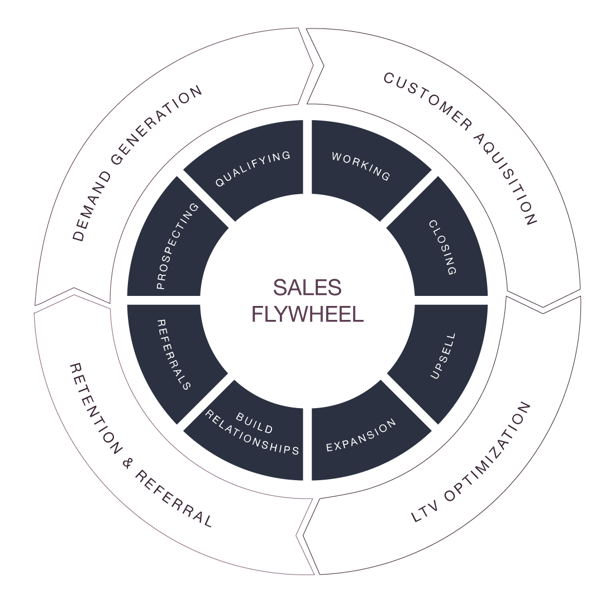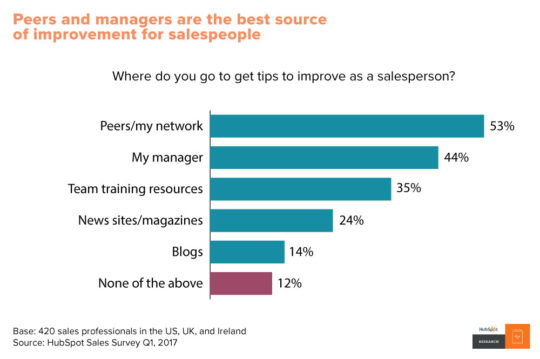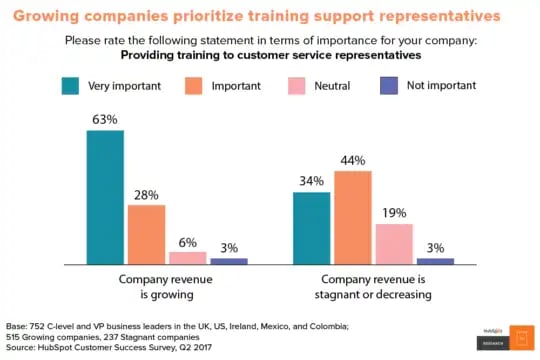A Comprehensive Guide to Sales Forecasting Accuracy
Imagine a world where your business can make informed decisions, allocate resources efficiently, and grow exponentially - all by accurately using past data and predicting future sales. Sounds like a dream, doesn't it? Well, it's not as far-fetched as you might think.
The key to accurate revenue predictions lies in accurate probabilities that are leading indicators for your sales forecasting. With the right pipeline forecasting methods and strategies, you can unlock this potential for your business.
In this blog post, we'll explore the importance of accurate sales forecasting, the common challenges faced, and the various proven methods and strategies to improve sales forecasting accuracy.
Short Sales Forecasting Summary
-
Accurate revenue forecasting is essential for successful business planning and growth.
-
Leveraging technology, data analysis, and collaborative methods to set expectations can help businesses improve their forecasts.
-
Five proven forecasting methods include length of sales pipeline cycle, opportunity stage, historical forecasting, multivariable analysis and pipeline forecasting.
The Importance of Precise Sales Forecasting

Correct sales forecasting is the backbone of any successful business having visibility into accurate predictions. It enables you to make well-informed decisions, allocate resources effectively, and expand your business.
By anticipating increased demand, deciding whether to expand the workforce, and taking proactive steps to boost lead generation, an error-free sales forecasting method plays a vital role in driving business growth.
Improved Decision-Making
Staying competitive in today's fast-paced business world is crucial. Accurate sales and demand forecasting also allows businesses to anticipate customer requirements, especially when considering the average sales cycle length.
By using raw data, selecting the most suitable forecasting method, establishing a consistent sales process, and utilizing technology and tools that analyze past sales data, your business can make data-driven decisions that keep you ahead of the competition.
Efficient Resource Allocation
Efficient resource allocation is the key to maximizing profits and minimizing costs. Exact sales forecasting provides businesses with the ability to accurately estimate their costs and predict future revenue and amount, enabling them to anticipate short-term and long-term performance.
This, in turn, facilitates informed decision-making about future operations, marketing, and resource allocation, ensuring that resources are allocated effectively and efficiently, leading to increased profitability and growth.
Business Growth and Expansion
Accurate sales forecasting and trend analysis empowers businesses to make informed decisions regarding resource allocation, budgeting, and staffing. By recognizing potential issues and opportunities for growth, businesses can capitalize on these insights to drive expansion and success.
Moreover, staying attuned to market and industry trends, and the impact of legislative changes can help businesses adapt their sales forecasts accordingly, ensuring a sustainable path to growth.
Common Challenges in Sales Forecasting Accuracy
Despite its importance, achieving an accurate forecast for sales is often easier said than done. Businesses face several common challenges, including incomplete or inaccurate data, subjective input from sales reps, and rapid market changes.
Overcoming these obstacles is crucial to improve your current sales pipeline forecast accuracy and make better-informed decisions for your business.
Incomplete or Inaccurate Data
Incomplete or inaccurate data can severely impact sales forecasting accuracy. Erroneous data may lead to an inadequate supply or surplus of inventory, overspending of the budget, and wasted resources spend money and time. Examples of such data may include outdated customer information, incorrect historical sales data used, and outdated product or pricing information.
To tackle this challenge, businesses can verify data accuracy, utilize automated data validation tools to collect data first, and leverage technology and tools to ensure data accuracy.
Subjective Input from Sales Reps
Subjective input from sales reps can introduce inaccuracy and bias into sales forecasting. Sales reps may base their forecasts on intuition and subjective opinions that reply on confirmation bias rather than on objective data. This can lead to overestimation or underestimation of prior sales data, resulting in an inaccurate, forecast based on future sales.
To mitigate this issue, businesses should emphasize the importance of clear guardrails in the sales process and focus on the data-driven forecasting method that is best suited for your companies pipeline forecasting objectives.
Rapid Market Changes
Rapid market changes, such as shifts in customer preferences, the entry of new competitors, or changes in the economic environment, can significantly impact sales pipeline forecasting accuracy. In such situations, businesses need to adapt their revenue forecasting methodology to account for these changes.
When a business selects the appropriate sales strategy and forecasting method, they can navigate the challenges posed by rapid market changes. Also, instituting a consistent and accurate sales forecast process is crucial. Utilizing technology and tools further enhances the ability to maintain accurate sales pipeline forecasting. Finally, implementing collaborative sales forecasting is another key factor in effectively addressing the impact of market dynamics on sales.
Scalable Strategies for Accurate Sales Forecasts
To overcome the challenges in sales funnel forecasting accuracy, businesses can adopt various sales revenue and strategies. These include choosing the right sales revenue forecasting technique, implementing a consistent sales process, and leveraging technology and tools to affect sales more.
By employing these strategies, businesses can significantly improve the accuracy of their sales forecasts and make more informed decisions.
Choosing the Right Forecasting Method
Selecting the appropriate forecasting method is crucial to achieving accurate sales forecasts. Each forecasting method has its own strengths and weaknesses, and choosing the wrong one can lead to erroneous business decisions.
Always take the time to evaluate the specific needs and data available for your business. You can then select the most suitable sales growth forecasting method to improve sales probability accuracy.
A consistent sales process is essential for improving sales flywheel or pipeline forecasting accuracy. By establishing a standardized sales process, businesses can ensure more efficient selling, expedited sales rep onboarding, consistency for future customers, improved morale among the sales department, and ultimately, improved revenue forecast accuracy.
This process can help to ensure that sales professionals are following the same steps and using the same tools, which can help to create a more accurate sales process.
Leveraging Technology and Tools
Utilizing technology and tools can play a significant role in improving sales pipeline forecasting accuracy. They grant access to more precise historical data points, automate processes, and offer insight into customer behavior, leading to more accurate sales opportunity pipeline forecasts.
By investing in pipeline forecasting technology, businesses can refine their sales forecasting technique and enhance the accuracy of their predictions.
Top 5 Proven Sales Forecasting Methods
There are several proven revenue forecasting approach that businesses can adopt to improve accuracy. These include length of revenue cycle forecasting, opportunity stage forecasting techniques, historical trends, sales forecasting techniques, multivariable analysis forecasting, and pipeline forecasting.
Each method offers its own set of advantages and can be tailored to the specific needs of your business.
Length of Sales Cycle Forecasting
Length of revenue cycle forecasting is a method qualitative pipeline forecasts that takes into account the average duration of a sales cycle. This average sales cycle, period and method is most beneficial for companies that track prospects' entry into the sales funnel and requires close alignment between sales and marketing teams.
Understanding the average sales price, average lead value, and length of the sales cycle allows businesses to make their sales growth forecasts more predictable and allocate resources more effectively.

Opportunity Stage Forecasting
Opportunity stage forecasting is a call forecasting technique, designed to provide sales leaders with an accurate prediction of the likelihood of closing a specific deal by breaking down the sales development pipeline into distinct stages.
This method ensures that forecasts are not based on subjective factors, such as the intuition of leading reps. Instead, it relies on objective criteria, such as the sales rep's win rate and opportunity value, to predict the likelihood of closing a deal.
By using opportunity sales forecasting techniques, sales professionals can make more informed decisions about which deals to pursue and which to pass on. This helps to ensure that resources are allocated efficiently and that sales reps are focusing on the deals that are most likely to close.
Historical Forecasting
Historical forecasting is a technique that utilizes past sales data to anticipate and predict future sales. While this method can provide a solid foundation for sales opportunity forecasts, it has its limitations. For instance, it assumes a static market and does not consider seasonal fluctuations or uncertain market conditions.
Nevertheless, using historical data and forecasting can be a valuable tool for businesses with a stable market and consistent sales patterns.
Multivariable Analysis Forecasting
Multivariable regression analysis for forecasting is the most sophisticated and accurate method for forecasting. It takes into consideration several factors, like historical sales data, cycle length, individual rep performance and opportunity stage probability.
Though this method requires a substantial amount of clean data and advanced analytics, it is considered one of the most precise forecasting methodologies available.
Pipeline forecasting involves examining each opportunity within the current business development pipeline and assessing it based on criteria such as age, deal type, and deal stage. Always take the time to diligently analyze the contents of your pipeline and leveraging tailored revenue forecast tools, pipeline forecasting can provide businesses with a detailed and accurate sales probability models.
However, it is essential to be aware that this method can be easily distorted and often requires a dedicated revenue forecasting single source of truth.
Collaborative Sales Forecasting: Engaging Your Team
Collaborative sales team pipeline forecasting is an approach that involves buy-in from your broader sales teams in the pipeline forecasting process.
By setting clear expectations and goals, maintaining regular communication and feedback, and providing training and skill development, businesses can improve the accuracy of their sales opportunity forecast.
Setting Clear Expectations and Goals
Establishing clear expectations and goals is crucial for engaging the sales and marketing team in the forecasting process. It offers clarity, focus, and motivation for individuals and teams, enhances performance, raises employee satisfaction, promotes open communication, and diminishes misunderstandings.
Create clear sales funnel objectives and targets to better foster teamwork and improve the accuracy of sales rep forecasts.

Regular Communication and Feedback
Regular communication and feedback play a vital role in the success of collaborative sales forecasting models. By maintaining an open dialogue and providing constructive feedback, businesses can ensure that their team of sales executives is engaged and motivated to improve revenue forecast accuracy.
As you can imagine, frequent and candid feedback loops from the team can be gathered to assess how sales professionals are performing against sales quotas and forecasts, holding them accountable for their results.
Training and Skill Development
Training and skill development are essential components of engaging sales development teams in the forecasting process. By providing ongoing training opportunities, businesses can enhance their team's skills and expertise to forecast sales, leading to higher productivity, increased job satisfaction, and improved employee retention.
As a result, a well-trained sales team is more likely to leverage sales forecasting tools to make sales deals, produce accurate, sales figures and contribute to the overall success of the business.

Sales Pipeline Forecasting Accuracy Takeaways
In conclusion, accurate sales forecast model is critical factor in the success of any business.
Recognizing its importance, addressing common challenges, and adopting appropriate sales forecasting techniques, businesses can significantly enhance the accuracy of their sales forecasts and make more informed decisions.
Collaborative sales forecasting further engages the entire sales team, ensuring that everyone is working together towards a common goal.
With the right approach and tools, accurately forecasting tools is not only achievable, but can unlock the full potential of your business, paving the way for growth and success.
Frequently Asked Questions
What is the accuracy of sales forecasting?
Sales opportunity forecasting accuracy is an important metric to measure when assessing sales performance and cyclical market trends. When done correctly, it allows sales leaders to plan and make more accurate revenue predictions about and predict future sales outcomes.
High accuracy levels indicate that the sales managers and leaders have a strong understanding of the market, their customer base, and the effectiveness of their strategies.
How do you ensure sales forecast accuracy?
Ensuring pipeline forecast accuracy is achievable by establishing a structured process. Use reliable and complete historical data, identify factors that may affect your forecast future sales projections, and use effective forecasting tools to make sure you're working with accurate forecasts and projections.
Also, always involve key stakeholders when creating your forecasts for even greater accuracy.
What are three measures of forecasting accuracy?
Measuring forecast accuracy is an important part of managing inventory and minimizing risk. The three most common accuracy metrics are forecast bias, mean average deviation (MAD), and mean average percentage error (MAPE).
By using these measures to assess how accurately forecasts match actual outcomes, businesses can make more informed decisions and optimize their operations.
Which sales forecast model is most accurate?
Given qualitative data and the comprehensive and accurate nature of multivariable analysis common sales forecasting methods, this method appears to be the most reliable sales forecast.
By incorporating elements such as average sales period length, opportunity stage probability, and individual rep performance, it has the potential to accurately predict sales for Apr 17, 2025.
How do you measure sales forecast accuracy?
Sales funnel forecast accuracy can be measured through qualitative sales forecasts, This is commonly done through calculating the Mean Absolute Percentage Error (MAPE). This method compares the difference between the forecast sales amount and actual values and then divides them by the actual value.
MAPE is an effective way to assess the accuracy of a sales forecasting model.
